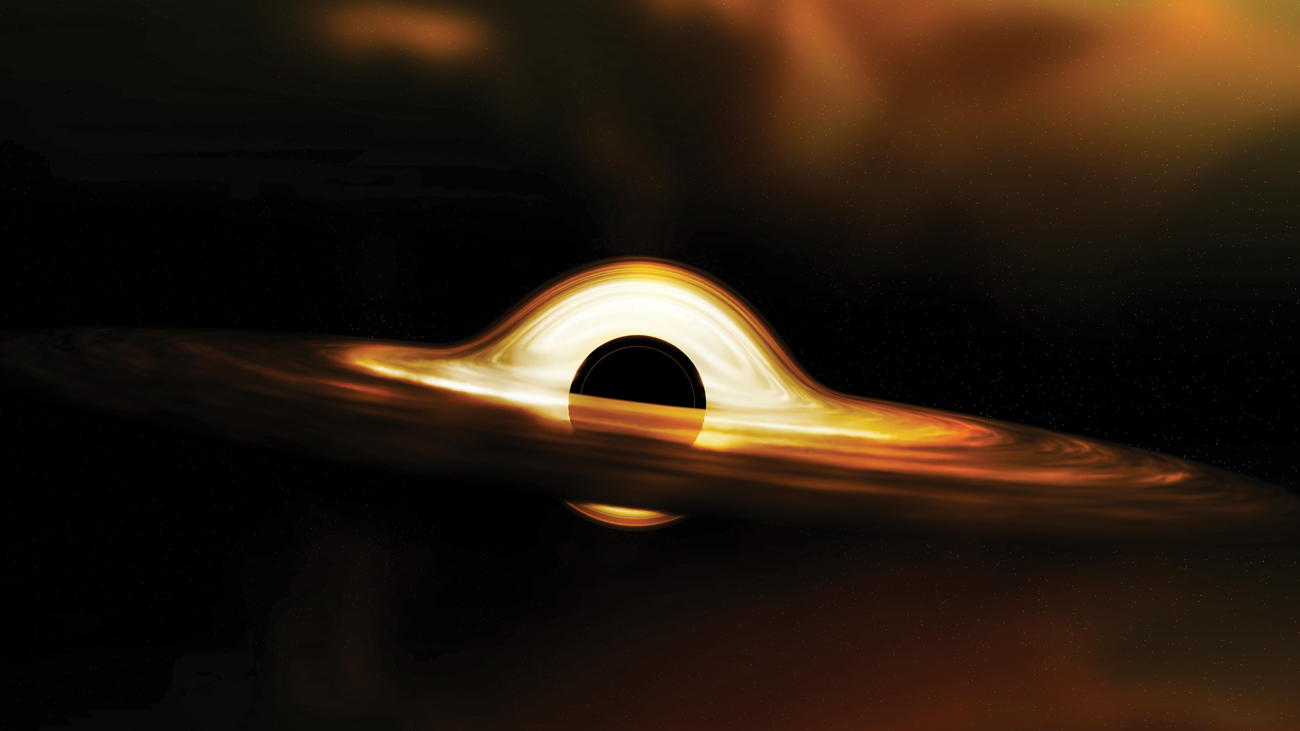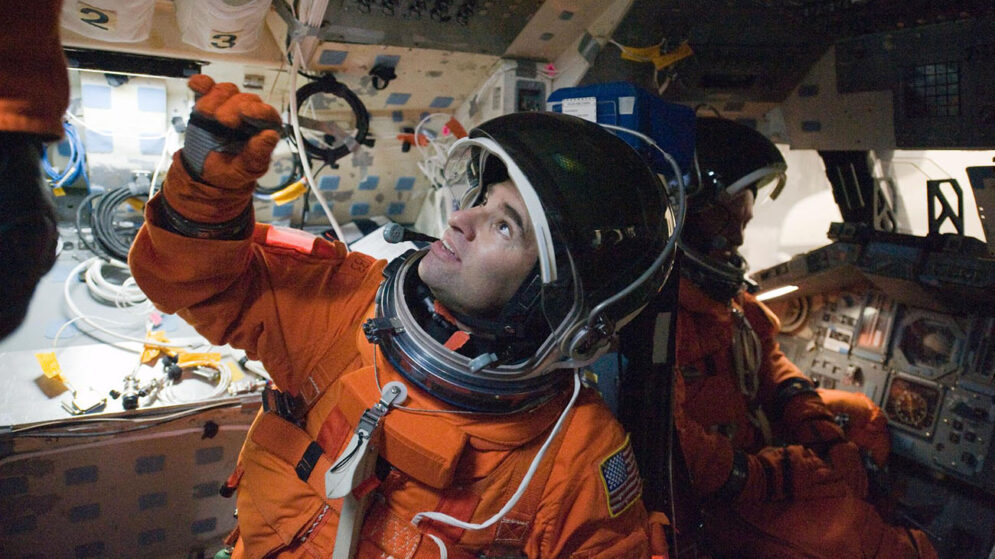Research
Unlocking the Mysteries
of the Universe
Two physics professors are working on some of the biggest questions haunting the universe, thanks to an astronomy research fellowship.
By Nick Wilson
Share this article:

An artist’s illustration of a black hole.
Since the Astronomy Faculty Research Fellowship in the Bailey College of Science and Mathematics launched in 2023, two physics professors have worked on some of the biggest questions haunting the universe.
The fellowship is supported by the Marrujo Foundation, established by Cal Poly alumnus Dan Marrujo (Electrical Engineering ʼ08) and his wife, Rosamaria Marrujo.
Professor Jodi Christiansen, who received the 2023-24 fellowship, and her team of students are studying extremely high-energy photons — known as gamma rays — emitted by the intense environment found near mega-sized black holes.
“These gamma rays are extremely energetic, so much so that they can’t come from a hot star, which just isn’t energetic enough,” Christiansen said. “What we’re looking at comes from the environment near a supermassive black hole.”
Most galaxies have a supermassive black hole at their center, she said, and some release energy in the form of enormous blasts of particle streams, or jets.
“There’s still a lot to learn about the physical mechanisms that produce the jets,” Christiansen said. “We don’t know why jets are formed. But we are very interested in how that energy can be released from this environment around the black hole.”
The plasma particles that the Cal Poly team observes come from an environment that is so powerful that the “atoms have fallen apart,” Christiansen said.
“Our images have shown jets that are bigger than galaxies,” she said. “This jet structure is huge compared to the galaxy. There aren’t a lot of places in space that produce this level of energy.”
“This is not typically undergraduate level work. It’s often done in graduate school and other higher levels of research. This research challenges a different part of your brain that you have to engage.”
Aaron Whorl, physics student
Professor Ben Shlaer, recipient of the 2024- 25 fellowship, is working with multiple teams of students and recent graduates on investigations into the unknowns of space and time — and abstract questions around early universe cosmology relating to the big bang, black holes and universe expansion.
Their observations of our universe could reframe our understanding of how time works and interacts with physical phenomena.
Shlaer and his current students are trying to sidestep the thorny issue of the universe’s initial conditions by basing their work on a model that predicts that time must flow backwards and forwards, and almost all motions can be reversed.
“There’s no natural understanding of initial conditions of the universe,” Shlaer said. “All of the physics we’ve ever developed is really a theory of how to predict what happens from certain initial conditions.”
Three physics students working with Shlaer are tackling questions around whether a time-reversal model can explain dark energy — the mysterious force that causes the observed accelerated expansion of our universe — in a more natural way than other theories.
“This is not typically undergraduate level work. It’s often done in graduate school and other higher levels of research,” said Aaron Whorl, one of the three physics majors working on the time-reversal model. “This research challenges a different part of your brain that you have to engage.”
Your Next Read
Years of hard work and lifelong dreams of space propelled this Mustang to a historic mission aboard the International Space Station.
Could space farms be a possibility one day? This professor is researching one way to grow greens in zero gravity.




